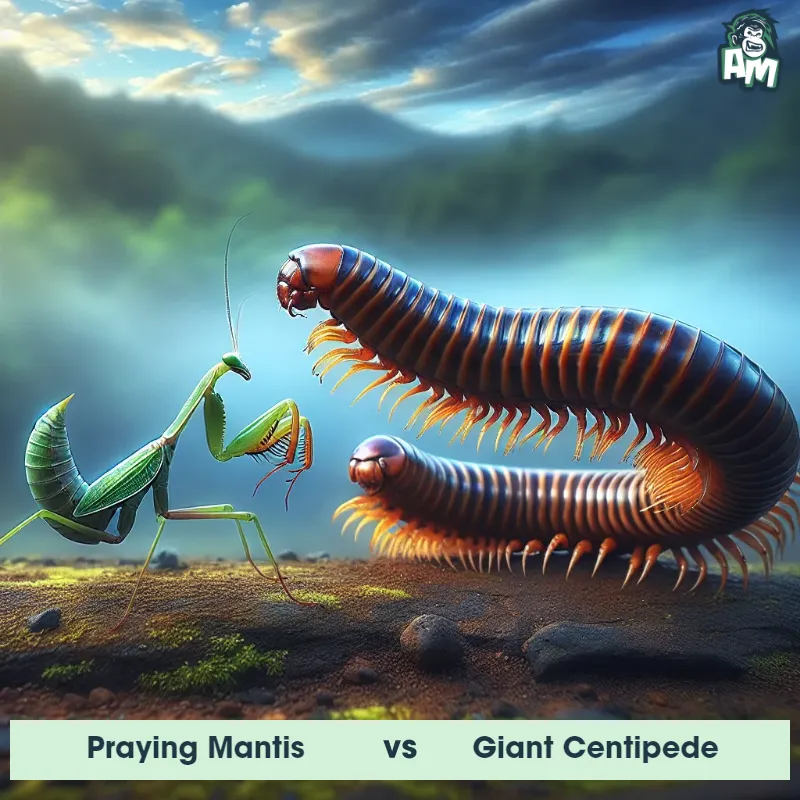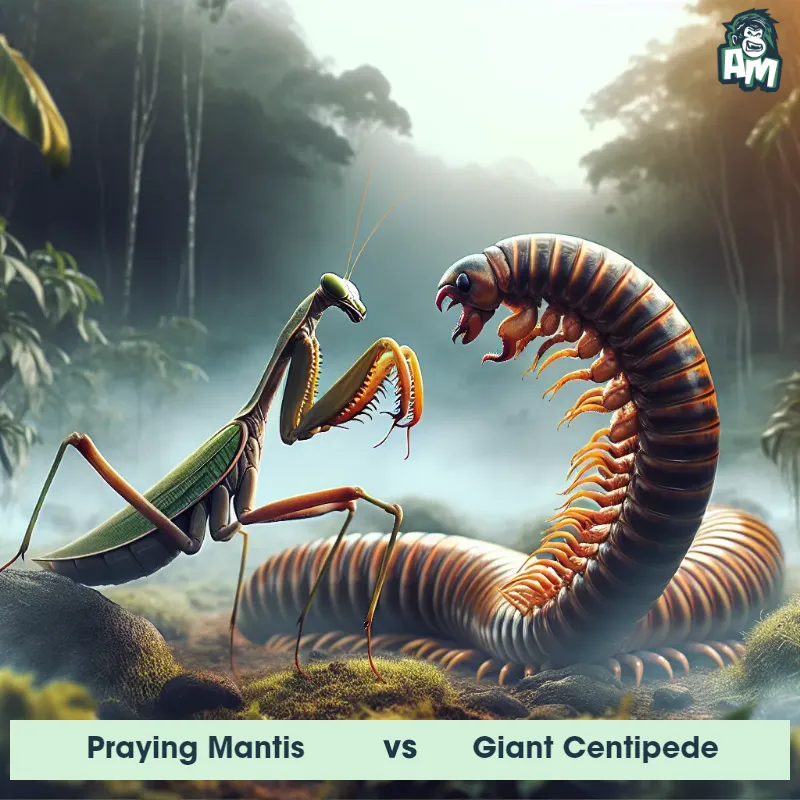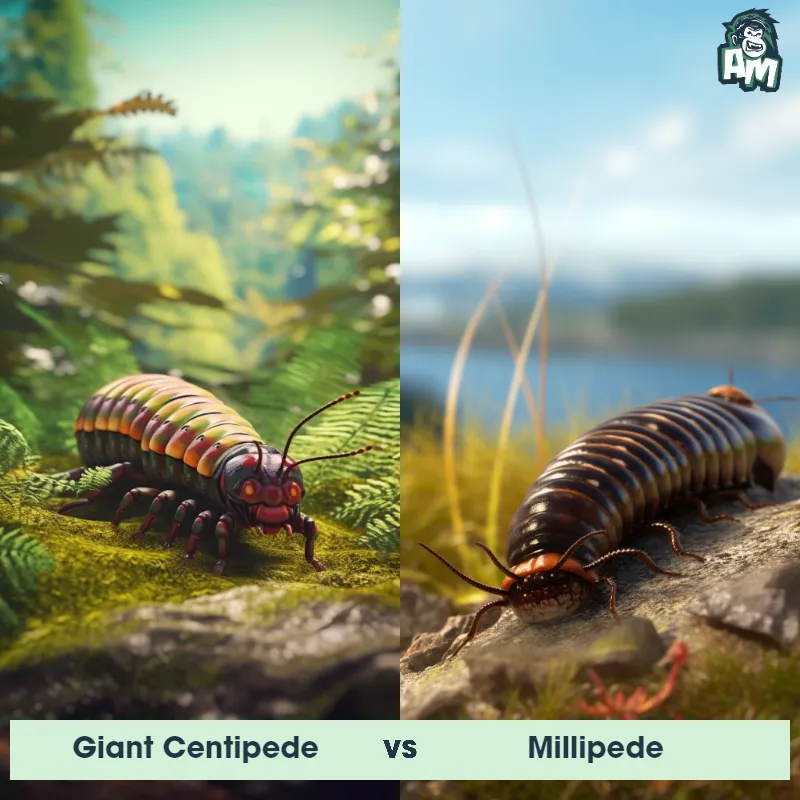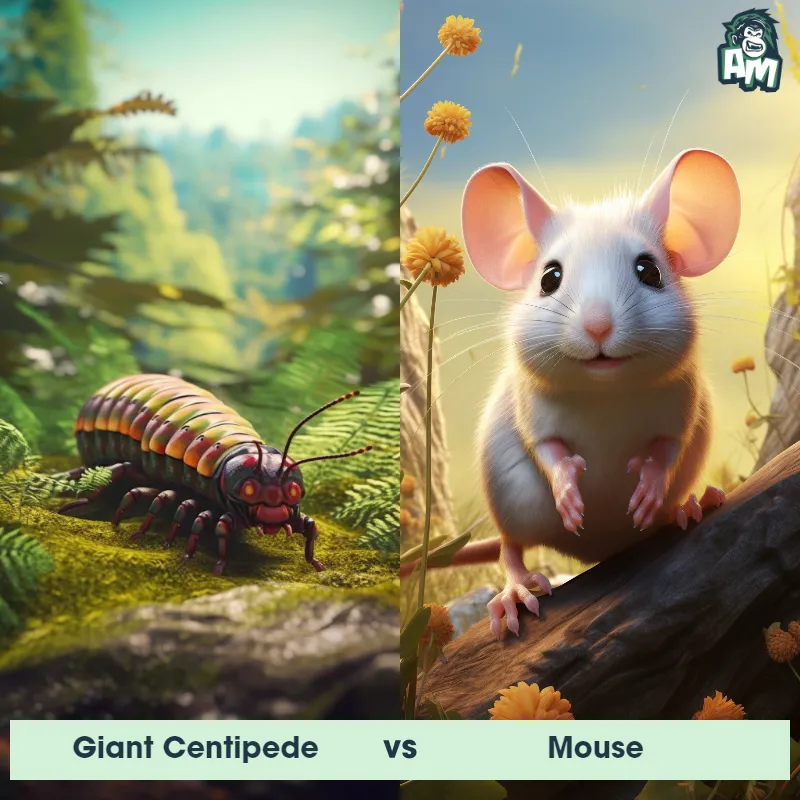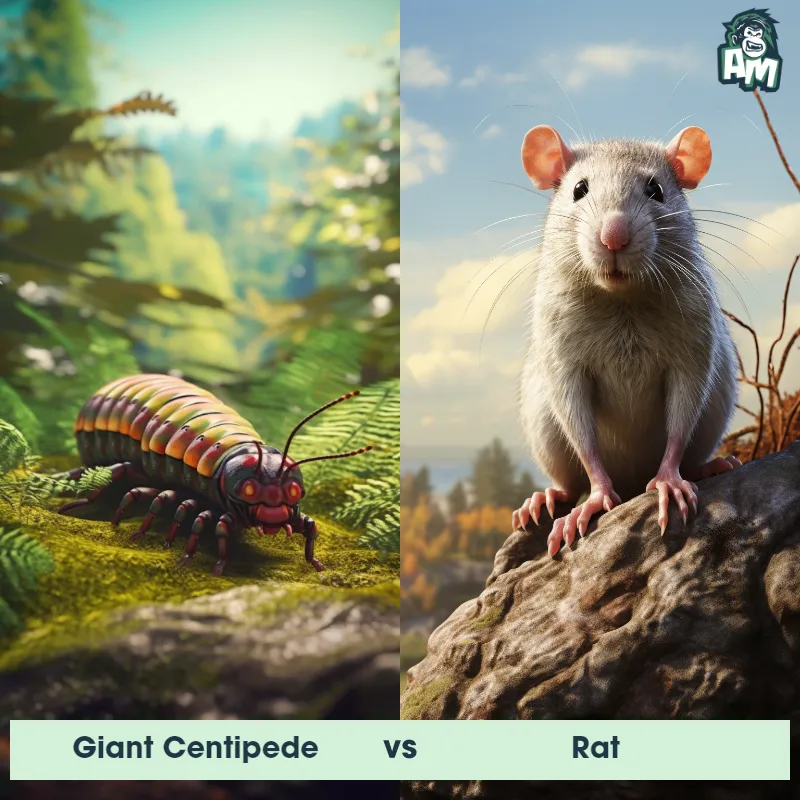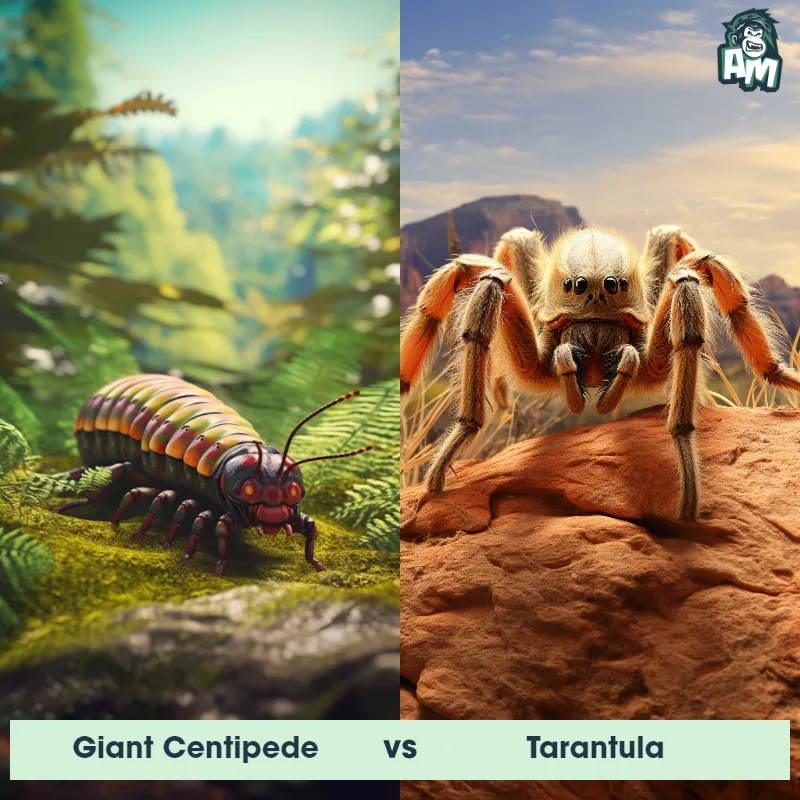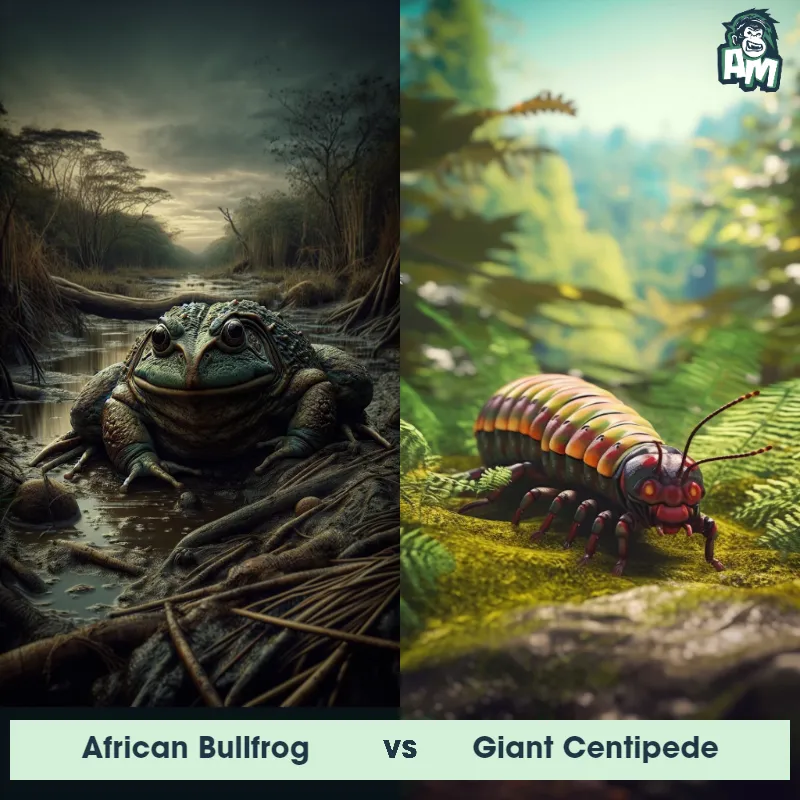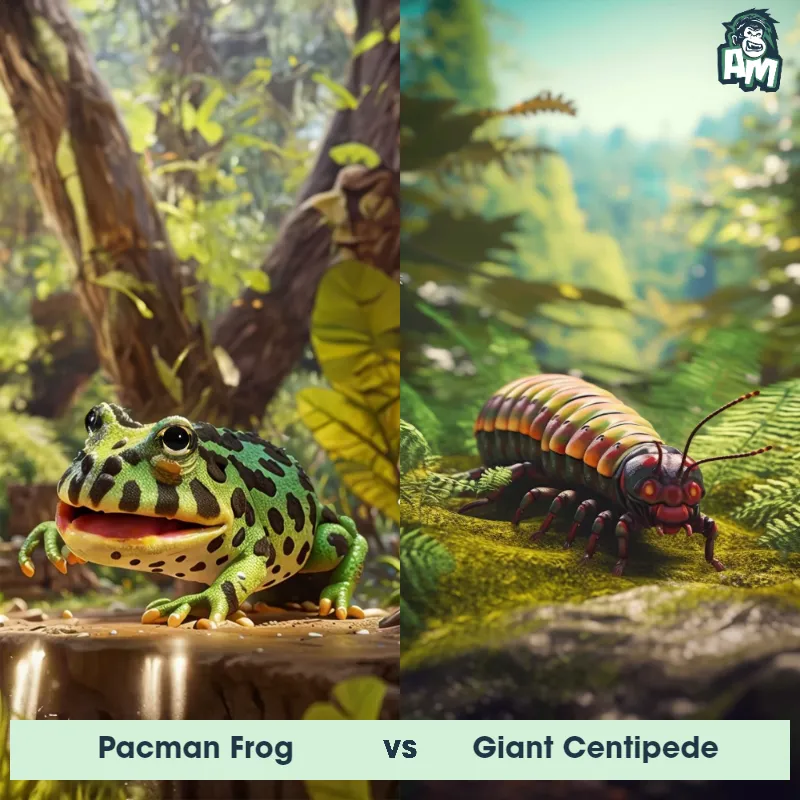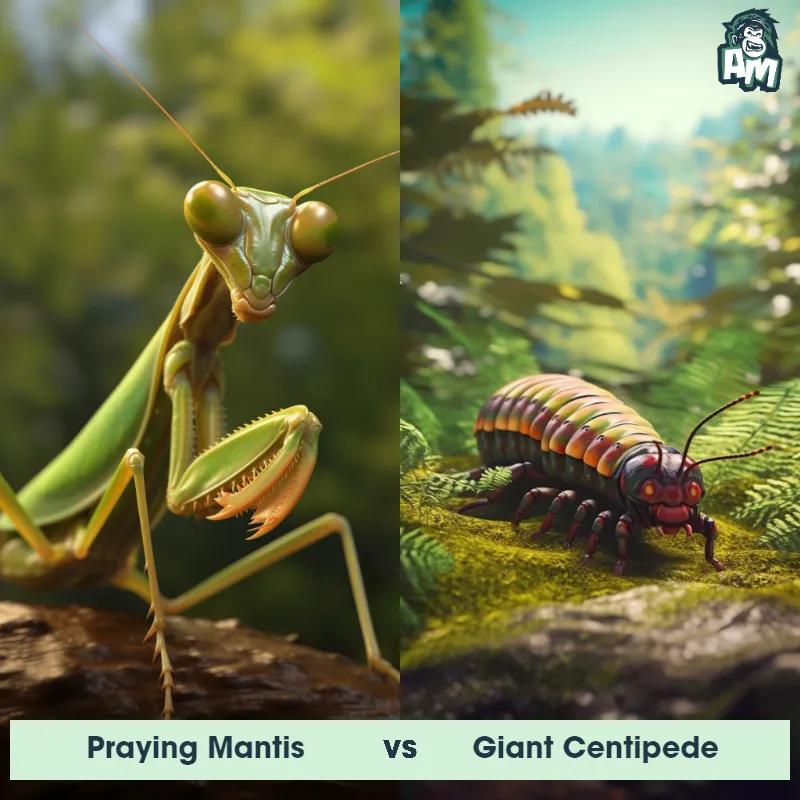The Giant Centipede
The Giant Centipede, also known as Scolopendra gigantea, is an impressive arthropod that can grow up to 12 inches long and has a segmented body covered in a hard exoskeleton. It can come in various colors, ranging from reddish-brown to brightly colored, and has numerous legs, typically between 30 and 46 pairs. On its head, it possesses a pair of large, venomous fangs that it uses to capture and immobilize its prey. Despite its name, the Giant Centipede is not an insect but a type of myriapod, belonging to the class Chilopoda.
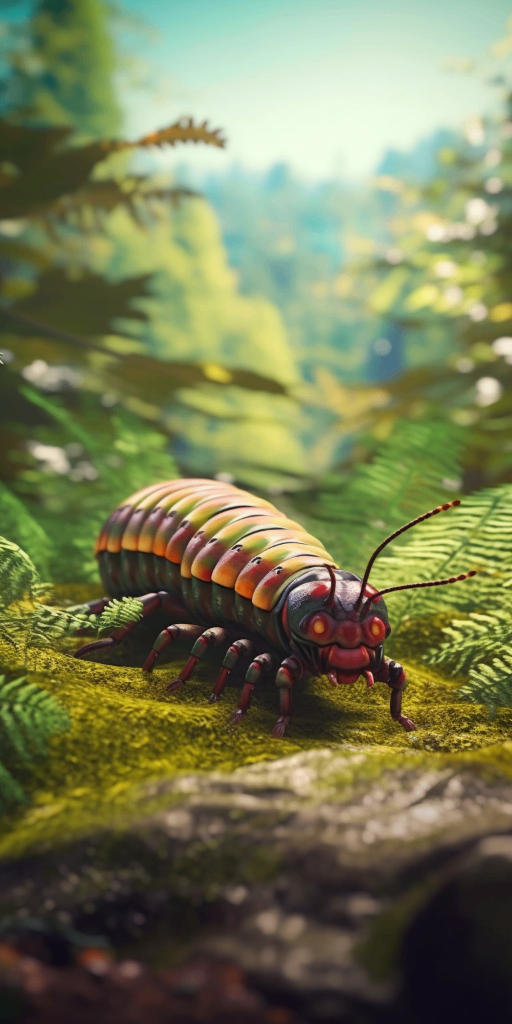
| Giant Centipede | |
|---|---|
| Size | Up to 12 inches (30 cm) |
| Weight | Up to 3.5 ounces (100 grams) |
| Speed | Speed: 16 mph (25.75 km/hr) |
| Key Strength | Venomous fangs and quick movements |
| Biggest Weakness | Vulnerable to being flipped onto its back |
| Scientific Name | Scolopendra gigantea |
| Family | Scolopendridae |
| Habitat | Terrestrial |
| Geography | Tropical regions of South America, Africa, and Asia |
| Diet | Insects, spiders, small reptiles, and mammals |
| Lifespan | 3 years - 10 years |

The Giant Centipede
The Giant Centipede, also known as Scolopendra gigantea, is an impressive arthropod that can grow up to 12 inches long and has a segmented body covered in a hard exoskeleton. It can come in various colors, ranging from reddish-brown to brightly colored, and has numerous legs, typically between 30 and 46 pairs. On its head, it possesses a pair of large, venomous fangs that it uses to capture and immobilize its prey. Despite its name, the Giant Centipede is not an insect but a type of myriapod, belonging to the class Chilopoda.
Fun Fact: One fascinating fact about the Giant Centipede is that it is a fierce predator, capable of taking down larger prey than itself, such as lizards, bats, and small rodents. It subdues its victim by injecting venom through its fangs, paralyzing them before devouring them whole.
| Giant Centipede | |
|---|---|
| Size | Up to 12 inches (30 cm) |
| Weight | Up to 3.5 ounces (100 grams) |
| Speed | Speed: 16 mph (25.75 km/hr) |
| Key Strength | Venomous fangs and quick movements |
| Biggest Weakness | Vulnerable to being flipped onto its back |
| Scientific Name | Scolopendra gigantea |
| Family | Scolopendridae |
| Habitat | Terrestrial |
| Geography | Tropical regions of South America, Africa, and Asia |
| Diet | Insects, spiders, small reptiles, and mammals |
| Lifespan | 3 years - 10 years |
Match Highlights
Giant Centipede Matchups
We use AI to simulate matchups between the Giant Centipede and other animals. Our simulation considers size, strength, and natural predatory behaviors to determine the most likely outcome.
Giant Centipede: Diet, Predators, Aggression, and Defensive Behaviors
What do Giant Centipedes eat?
Giant Centipedes are carnivorous creatures that primarily feed on insects, spiders, small reptiles, amphibians, and even small mammals. They are known to be opportunistic hunters and rely on their venom to subdue their prey before consuming them.
Do Giant Centipedes have any predators?
While their large size and venomous bite make them formidable predators, Giant Centipedes do have natural enemies in the form of birds, mammals, and other larger predators. Creatures such as birds of prey, snakes, and certain species of spiders are known to feed on Giant Centipedes.
Are Giant Centipedes aggressive?
Giant Centipedes are known to be aggressive predators when hunting for food. They use their quick movements and venomous bite to capture and immobilize their prey. However, when not hunting or threatened, Giant Centipedes are generally shy and will try to avoid confrontation.
Do Giant Centipedes fight?
Giant Centipedes are solitary creatures and can be territorial, especially when it comes to defending their hunting grounds or mating partners. In these situations, Giant Centipedes may engage in aggressive interactions with each other, including physical combat and biting.
How do Giant Centipedes defend themselves?
Giant Centipedes have several defense mechanisms to protect themselves from predators and threats. Their primary defense is their venomous bite, which can cause pain, swelling, and even paralysis in some cases. Additionally, they are incredibly fast and agile, allowing them to quickly escape from danger.
What is the biggest weakness of a Giant Centipede in a fight?
Despite their formidable size and venomous bite, Giant Centipedes have a vulnerability in their exoskeleton. While their hard shell provides protection, it can also be a weakness if it is damaged or compromised during a fight. Larger predators with powerful jaws or sharp claws can potentially break through the Giant Centipede's exoskeleton, leaving them vulnerable to injury or even death.
Fun Fact: The Giant Centipede is known for its incredible speed and agility. It can quickly navigate through various terrains, utilizing its numerous legs in a wave-like motion, allowing it to move with astonishing swiftness. Its ability to move swiftly enables it to easily catch its prey or escape from potential threats.
Fun Fact: Unlike most centipedes that live in moist environments, the Giant Centipede is highly adaptable and can be found in a diverse range of habitats, including forests, grasslands, and even urban areas. This hardy creature can survive in different climates and has been known to inhabit both rainforests and arid regions, showcasing its adaptability and resilience.



